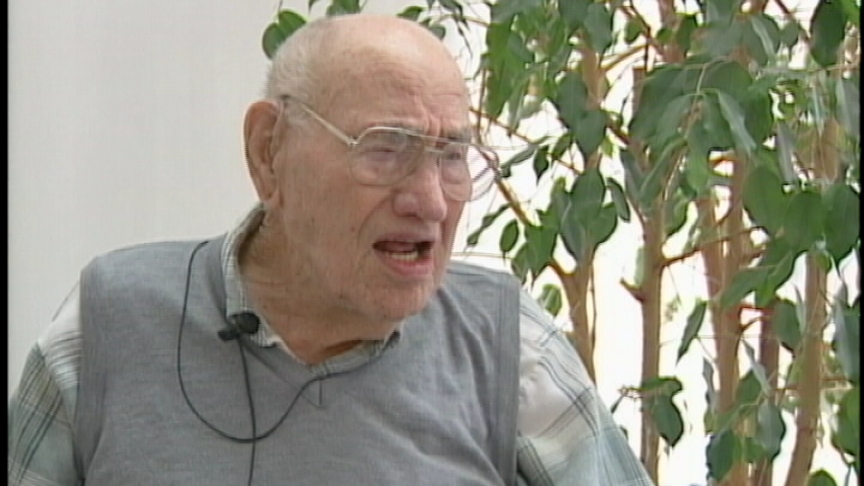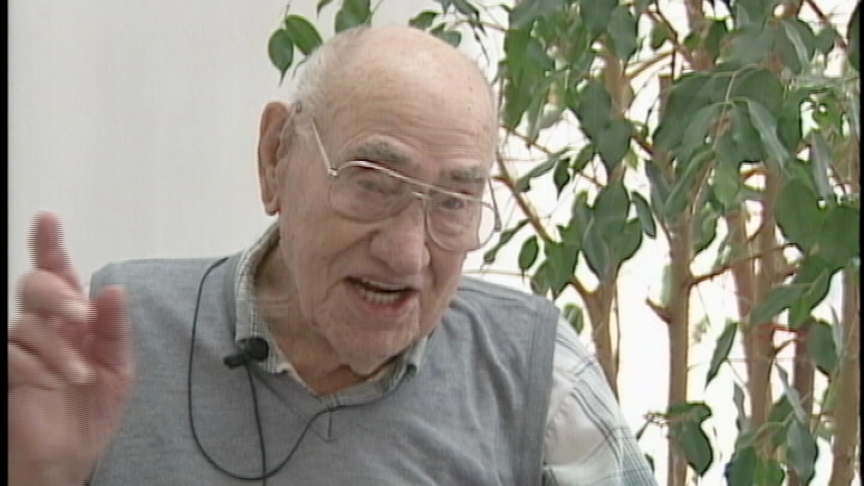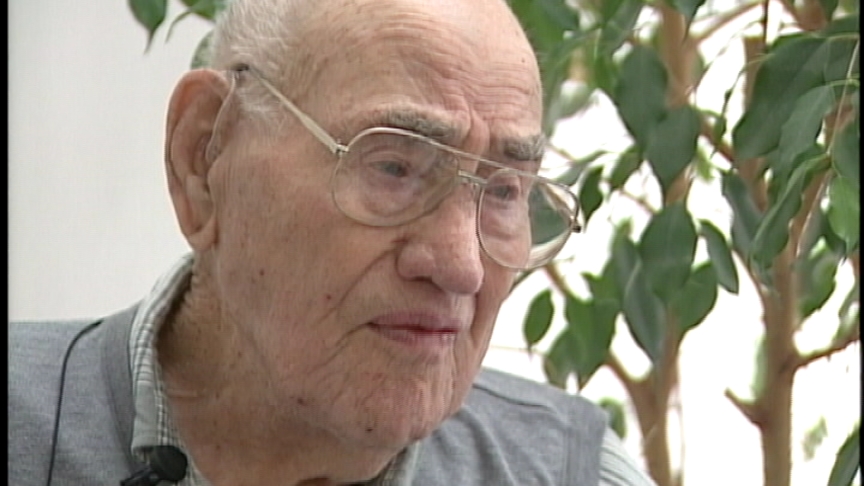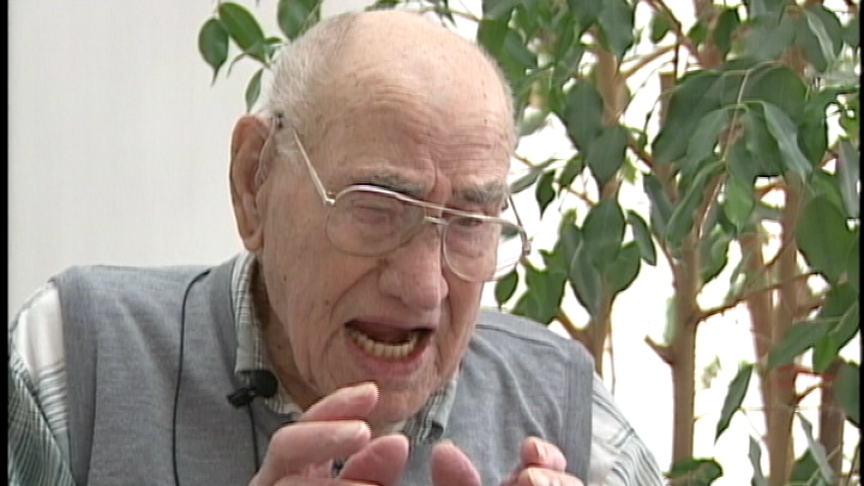Shell Fire
Heroes Remember
Shell Fire
Transcript
Description
Vimy Ridge had been taken, but Mr. Mason didn't think the allies were necessarily winning the war. He goes on to relate an incident that very nearly cost him an arm.
Alfred Mason
Alfred Mason was born in Tangier, Nova Scotia on January 4, 1895. After completing his schooling, he worked in the Tangier gold mines before moving to a job at the car works in Trenton, Nova Scotia when he was 17 years old. He would also spend some time at the steel works there and in the coal mines of northern Nova Scotia before going to Halifax in 1915 to enlist. He joined the 66th Battalion and then transferred to the 40th. He spent some time in Quebec in basic training and was then sent to England and, almost immediately, on to France. He arrived there in the Spring of 1916 as reinforcement for the 3rd Division, 8th Brigade of the 5th Battalion of the Canadian Mounted Rifles.
Meta Data
- Medium:
- Video
- Owner:
- Veterans Affairs Canada
- Duration:
- 02:46
- Person Interviewed:
- Alfred Mason
- War, Conflict or Mission:
- First World War
- Battle/Campaign:
- Battle of Vimy Ridge
- Branch:
- Army
- Units/Ship:
- 3rd Division, 8th Brigade of the 5th Battalion of the Canadian Mounted Rifles
- Rank:
- Sergeant
Related Videos
- Date modified:






